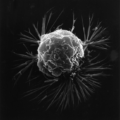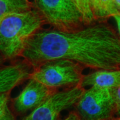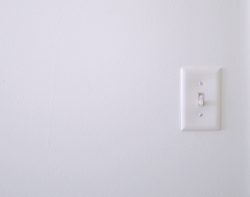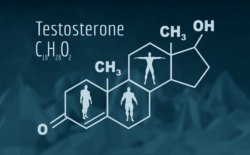Prostate cancer is the most common cancer among men in the US. It is second only to lung cancer in causing death. As of 2009, the most recent CDC stats reported, over 200,000 men are diagnosed annually and almost 30,000 die. Prostate cancer is a disease of older men with over 65% of those diagnosed over the age of 65. In men under the age of 40, the rate of diagnosis is 1 in 10,000 compared to 1 in 15 for men between the ages of 60-69.
Even though prostate cancer is the most common cancer among men, it is the most survivable with 91% of the men living 10 years post diagnosis. Because of its high survival rate, the quality of life post diagnosis and treatment is of great concern. Depending upon the treatment selected, post treatment side effects include:
- Urinary, bowel and erectile dysfunction
- Infertility
- Hormone and chemo side effects
A new study published in the journal Urology found that some men report slightly shorter penises post prostrate cancer treatment – a side-effect that they were none too pleased about. The study looked at complaints of reduced penis size in 948 men with recurrent prostate cancer. Results showed that only 2.63% (25) men reported a perceived reduction of less than 1/2 inch. Penis size was not measured pre- or post- treatment. In fact the study was conducted retrospectively – 5 years post treatment. Nevertheless, the authors and editors thought this worthy of publication.
According to the study’s lead author, Paul L. Nguyen, M.D., a radiation oncologist at Dana-Farber Cancer Institute and Brigham and Women’s Cancer Center in Boston:
“Some people might think this is frivolous — who cares about a slightly shortened penis — but it really does affect people’s lives,” he said in an interview. “If guys [in the study] had this bad result they were much more likely to regret the path they chose. This is important to talk about up front when people are making their decisions.”
Certainly, if in fact this was an actual, measurable side-effect of prostate cancer treatment, then men should be apprised of its possibility. Since the study was retrospective, no measurements were taken and the study was conducted entirely in a population of older men where age-related shrinkage is just as likely as treatment related shrinkage, it is difficult to determine what, if any effect, treatment had on actual penis size.
Even if there was measurable, though minute shrinkage, it seems like this may be the least of one’s worries when facing prostate cancer. Perhaps, we should be spending more time on mitigating the more severe treatment side-effects, or better yet, preventing prostate cancer altogether. Finally, why was this study published at all?














